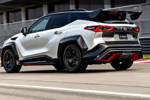The Tesla Model 3 has been a game-changer in the EV industry, offering a blend of cutting-edge technology, efficiency, and performance. But how does it hold up after years of ownership? In this long-term review, we examine the pros and cons of owning a Tesla Model 3 over an extended period.
Pros of Long-Term Ownership
✅ Low Running Costs
One of the biggest advantages of owning a Model 3 is its cost efficiency:
- No gasoline expenses – Charging at home is significantly cheaper than refueling a gas-powered car.
- Minimal maintenance – No oil changes, fewer moving parts, and regenerative braking reduce wear and tear.
- Battery longevity – Tesla’s advanced battery management system ensures durability, with minimal degradation over time.
💰 Verdict: The Model 3 saves owners thousands in fuel and maintenance costs over the years.
✅ Software Updates & Feature Enhancements
Unlike traditional cars, Tesla continuously improves its vehicles through over-the-air (OTA) updates:
- Enhanced Autopilot & Full Self-Driving features.
- Improved range optimization through software updates.
- New entertainment & customization options added over time.
🛠️ Verdict: The Model 3 gets better with time, making it a future-proof investment.
✅ Strong Performance & Driving Experience
- Instant torque & smooth acceleration – Even the base model delivers an exhilarating driving experience.
- Low center of gravity – Provides excellent handling and stability.
- Regenerative braking – Helps improve efficiency and extend range.
🚗 Verdict: Driving a Model 3 remains a joy even after years of ownership.
Cons of Long-Term Ownership
❌ Battery Degradation & Charging Infrastructure
- Battery performance degrades slightly over time, although Tesla’s batteries hold up well compared to competitors.
- Public charging reliability – While Tesla’s Supercharger network is strong, some areas still lack convenient charging options.
- Home charging dependency – Owners without home charging may find long-term EV ownership less convenient.
🔋 Verdict: Battery longevity is solid, but charging infrastructure remains a factor for consideration.
❌ Build Quality & Repairs
- Panel gaps & paint quality issues – Some long-term owners report minor build quality inconsistencies.
- Expensive out-of-warranty repairs – Tesla repairs can be costly, and parts availability may lead to delays.
- Limited service centers – Depending on location, accessing Tesla-certified repairs can be challenging.
🛠️ Verdict: Tesla’s build quality has improved, but repair costs and service availability remain concerns.
❌ Technology Overload & Lack of Physical Controls
- Touchscreen dependency – Nearly all functions are controlled via the central screen, which can be distracting for some drivers.
- Voice commands & software quirks – While Tesla’s AI is improving, some features still feel like work in progress.
- No traditional instrument cluster – Some drivers miss the convenience of a traditional speedometer and buttons.
📱 Verdict: The tech-driven interface is futuristic but may not be ideal for all users.
Final Verdict: Is the Tesla Model 3 a Good Long-Term Buy?
✅ Pros: ✔️ Low running and maintenance costs
✔️ Regular software updates improve the car over time
✔️ Strong driving performance and handling
✔️ Resale value remains high
❌ Cons: ❌ Potential battery degradation & charging limitations
❌ Expensive repairs outside warranty
❌ Minimalist design may not suit everyone
⭐ Overall Rating: 8.5/10 – The Tesla Model 3 remains a solid investment for EV enthusiasts, offering innovation, efficiency, and a thrilling drive. However, potential owners should weigh charging accessibility, repair costs, and tech-heavy controls before making a decision.
🚘 Would you buy a Tesla Model 3 for the long run? Share your thoughts below!



